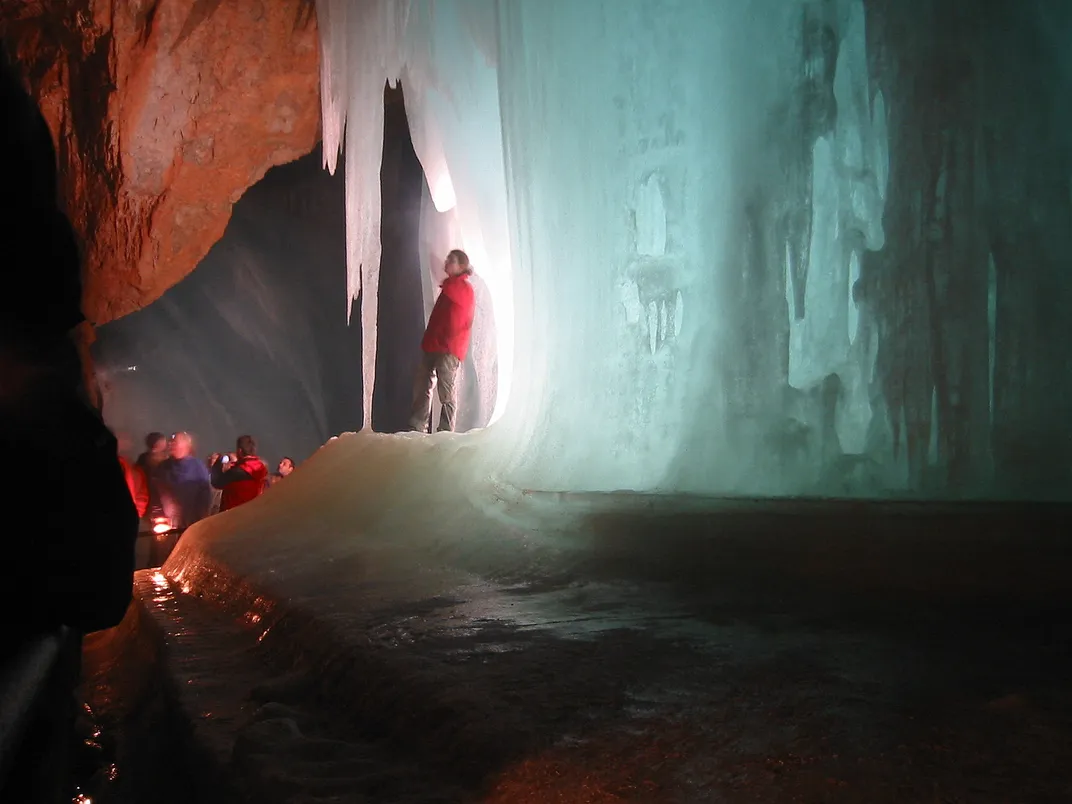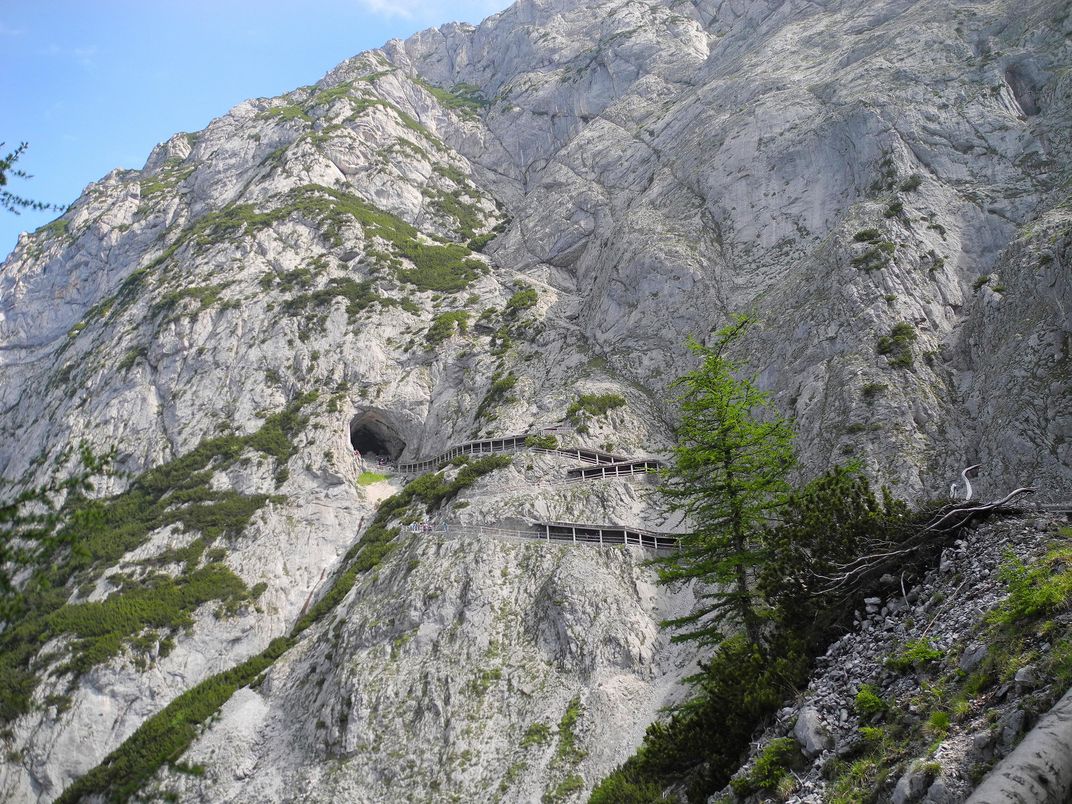Descend into the World’s Iciest Gateway to Hell
Austria’s Eisriesenwelt, the world’s largest ice cave, mixes science with folklore
Armed with only open-flame lanterns for light, a group of tourists ascends into darkness. Shadows stretch on the walls around them, with shifting light flickering back onto the group. As they look around, it appears as though they are moving forward into the belly of the underworld—perhaps directly into a fate more dire than they had imagined.
But, in truth, they’re simply heading into Eisriesenwelt, the largest ice cave in the world, nestled high up in the Austrian Alps. Locals in Werfen, the town below, have historically refused to explore the cave, repeating folklore tales that the gaping entry hole on the side of Hochkogel Mountain is the opening to Hell. But the actual story behind the cave’s formation is much less sinister.

About 100 million years ago, shifts in tectonic plates caused the region’s foundational limestone to begin to crack and fissure. Over time, water seeped down through the cracks, causing the stone to erode into corridors and large rooms. Eisriesenwelt as we know it today is more than just a single cave chamber; rather, it’s nearly 25 miles of labyrinthine passageways and rooms.
Only the beginning of the cave, reaching a bit more than half a mile into the formation, is covered in ice. Eisriesenwelt is considered a dynamic ice cave, meaning that corridors and rooms throughout are connected from top to bottom, allowing air to pass through like a chimney. In the spring, water typically enters the cave through fissures and then freezes inside, creating formations like frozen waterfalls, ice stalagmites and sculptures. The ice formations stay all year due to the cave’s connectivity—in the winter, cold air enters through the bottom of the cave and cools off everything inside on its way out the top, and in the summer it reverses, with air coming in from the top and heading out the bottom, cooling as it goes down. The oldest existing layers of ice found in the cave are believed to be about 1,000 years old—and the cave is still growing, too. New water enters the cave every year, continuing the process of carving out new passageways and spaces.

Eisriesenwelt was officially discovered in 1879, when explorer Anton von Posselt-Czorich tossed aside locals’ hesitations about entering the supposed gates of Hell and trekked in about 650 feet. He published a report about the cave a year later, but it would be decades before anyone else took over exploration around 1913. At that point, cave explorer Alexander von Mörk, along with other like-minded explorers, began an intensive study of the maze-like passages. Around 1920, an explorer's lodge and pathways to access the mountain were built, and in 1924, a wooden walkway was constructed inside the cave to take visitors through the icy expanses. Eisriesenwelt has been a must-see spot ever since.
If you go, be prepared to work for the experience. The inside of the cave has about 700 steps—and that’s after a more-than-400-foot hike up the side of the mountain to get to the opening. Less active travelers, though, can cut the majority of the climb out with a ride up the mountain on what is currently Austria’s steepest gondola lift. Luckily, however you choose to ascend, you’ll cool right off upon arrival since the temperature in the cave is known to stay a consistently chilly 32 degrees.
/https://tf-cmsv2-smithsonianmag-media.s3.amazonaws.com/accounts/headshot/JenniferBillock.png)


/https://tf-cmsv2-smithsonianmag-media.s3.amazonaws.com/accounts/headshot/JenniferBillock.png)